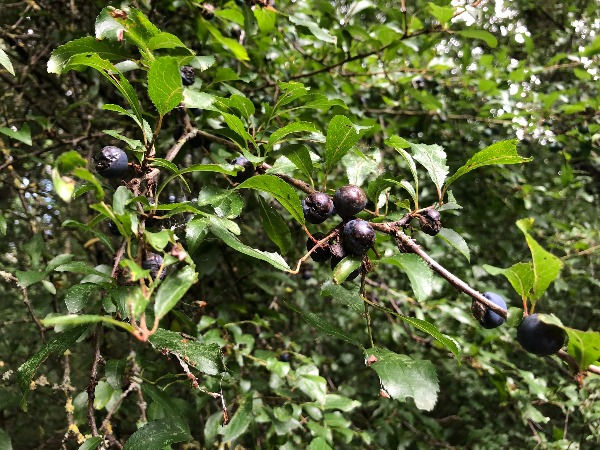Bullace - Prunus domestica spp. italica
- The Foraging Course Company
- Apr 11, 2022
- 2 min read
Updated: Jan 15

Edible plant - Novice Season - All year Common names bullace, wild green gage, wintercrack plum
Scientific name meaning: Literally meaning plum tree, Prunus is a Latin word. Domestica is from the Latin domesticus, meaning belong to a household - a reference to cultivation of the species. The subspecies name, Italica, means from Italy
Habitat  Bullace can be found in hedgerows, woodlands, parks and gardens. Although considered a native, they were introduced to Britain by the Romans. |
Overall structure  A low-growing tree reaching 5-10m, with thin branches. |
Leaves  Leaves are oval shaped, wrinkled and slightly downy underneath. They broaden slightly on the top half. |
Stem  The bark is dark coloured and slightly shiny on the younger branches. |
Flower  The white flowers have five petals and appear in spring. |
Fruit  Flowers are followed in autumn by small yellow (greengage) or dark purple (bullace, pictured) fleshy fruits containing a single stone. The resemble small plums. |
Possible lookalikes  Damson (pictured), blackthorn (sloes) and wild plums could all be mistaken for bullace. Fortunately, all of the fruit of these is edible. They often hybridise and are difficult to tell apart when this happens. Blackthorn, however, has a considerable number of thorns and the fruit is very astringent, even when ripe. |
Use as a food The fruit can be eaten raw when fully ripe, but can be quite acidic. Green/yellow fruits tend to be much sweeter. It can be used to make liqueurs.
Cooked, the fruit is used to make jams, jellies, syrups, ketchups and chutneys. Hazards The leaves and seeds contain cyanogenic glycosides and hydrogen cyanide. The seeds/stones, leaves, barks, stems and twigs should not be consumed.
Use in herbal medicine and medicine The roots have been used as a styptic, and flowers as a purgative.
If you are suffering from any ailment or need medical advice, please see your General Practitioner Other uses Green dyes can be made from the leaves and fruit. Importance to other species Provides a valuable nectar source for pollinators, and abundant food source for birds. The fruits provide food for the larvae of several moth species.
Always stay safe when foraging. You need to be 100% sure of your identification, 100% sure that your foraged item is edible, and 100% sure that you are not allergic to it (it is good practice to always try a small amount of any new food you are consuming). If in doubt, leave it out!




コメント